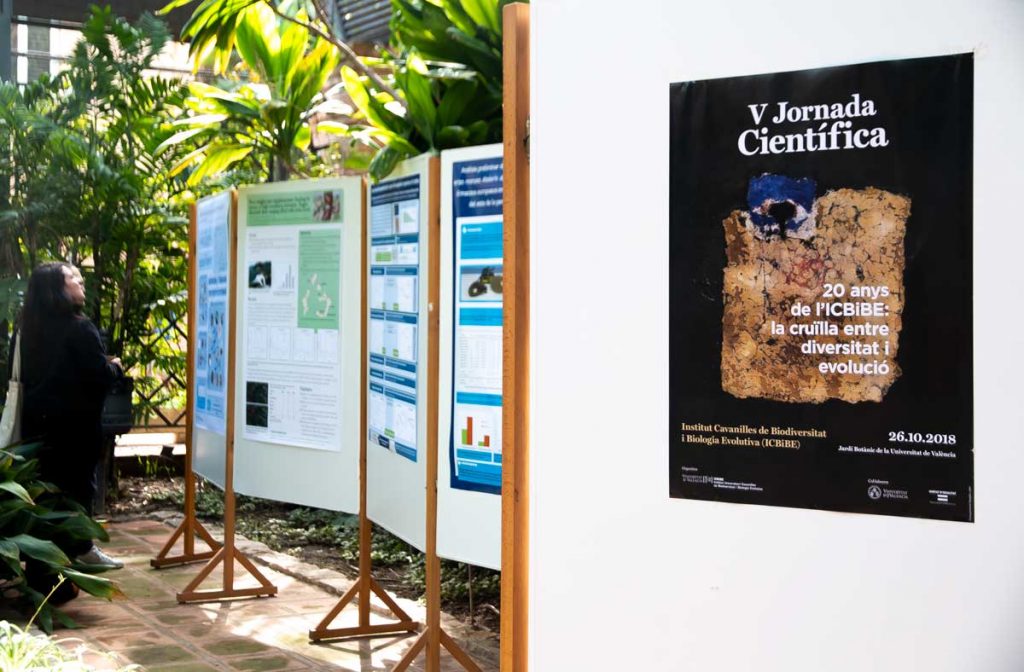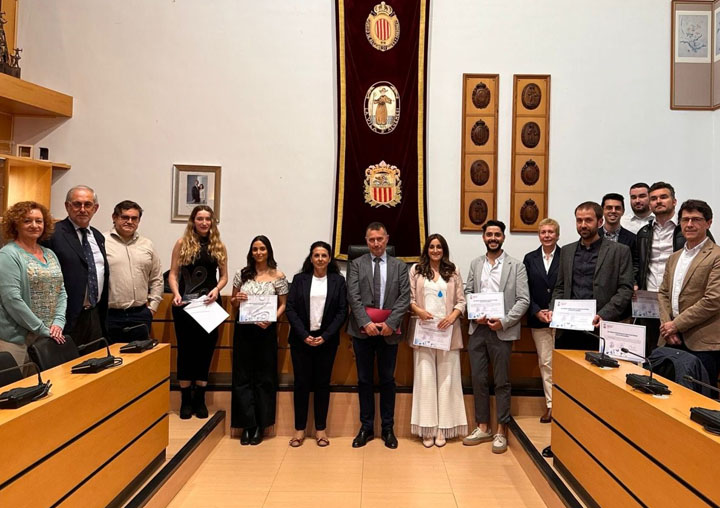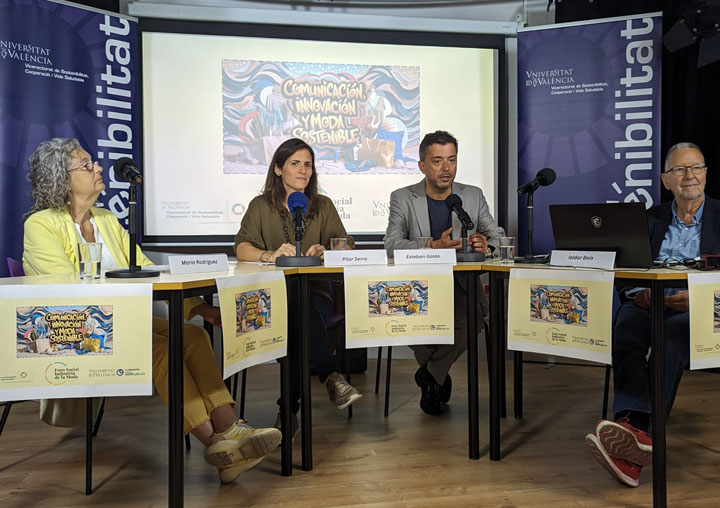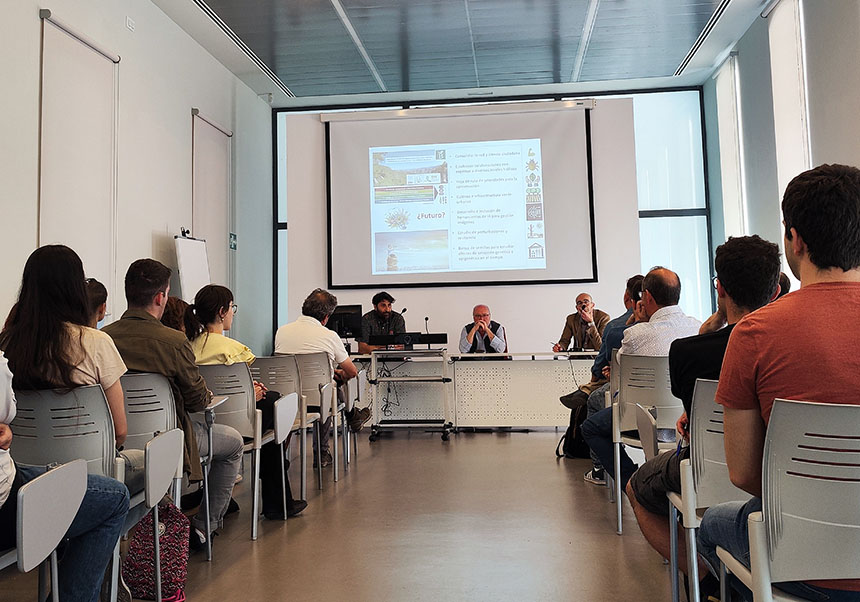Between diversity and evolution: the 5th Conference of Cavanilles Institute report in Mètode
- Mètode
- Susanna Ligero Tormo
- October 30th, 2018

The Cavanilles Institute of Biodiversity and Evolutionary Biology (ICBiBE) of the Universitat de València was founded in 1998. Mètode journal presents the report of the 5th Conference of Cavanilles Institute, celebrated on 26 October and landmarked by the entity’s foundation.
The Cavanilles Institute of Biodiversity and Evolutionary Biology of the Universitat de València was founded in 1998, a basic and applied research oriented centre. It has become one of the most advanced centres in the University due to its inclusive and multidisciplinary approach. The Institute involves 15 research groups and more than 100 members: staff researchers, postgraduate students, and technical staff.
On 26 Ocotber, the 5th Scientific Conference of Cavanilles Institute was celebrated in the Botanical Garden of the Universitat de València and assembled many researches in the Institute and other members of the scientific community in the Joan Plaça auditorium. The Conference title ‘ICBiBE 20th anniversary: between diversity and evolution’ was a programme’s declaration of intent: pooling projects and researches currently carried out at the Institute, as well as their most significant results.
20 years of excellence celebration
The scientific conferences of Cavanilles Institute have been taking place since 2004, and although it has not been periodically, “they’ve always successful” pointed Juan S. Monrós, Institute current director, during the inaugural table presided by the Principal of the University Mavi Mestre, in which Mª José Carmona, conference organisation committee coordinator.
Mª José Carmona, University’s full professor of Ecology, gave the first speech and pointed out the strong presence of young researchers in the Conference, both in the two programmed sessions and the posters exhibition at the Umbracle in the Botanical Garden. Juan S. Monrós, professor of Ecology of the populations, focused on the upcoming challenges of the Institute. As he stated, achieving the “excellence in Science” is the main goal of Cavanilles Institute, which requires “young talent”, only acquired offering “the best work conditions”. He also mentioned the need of optimum facilities and equipment to carry out different researches, and supporting technical staff for research.
Mavi Mestre, Principal of the Universitat de València, quoted professor Monrós and reaffirmed her support for the Institute and its projects, which she rated as “necessary for science and society”. In this sense, she also valued the participants and organisers of a conference for “sharing knowledge” and putting on table what has been already achieved and what is left to. “I’m keen on the challenges [of the University] but also the positive results” she indicated.
Hanna Kokko, main person in the conference
One of the new events of the 5th Scientific Conference of Cavanilles Institute was a plenary talk as a starting point. Hanna Kokko, professor of Ecology of Evolution in the University of Zurich and expert on mathematical models applied to biological systems analysis.
At the beginning of her talk – under the title ‘The tension between generality and diversity: what makes biology so cool’ – Hanna Kokko stated that “life is wonderfully diverse”. “If we want to find an answer to key questions such as why does sex happen, we must understand the irregular and little things first”. The rest of the conference was about questions such as sex cost in life and the implied aspects in evolution, as well as the studies to find “more realistic” models of reproductive strategies in different organisms. It was concluded that studying “exceptions” is what brings general laws and diversity must be accepted and “embraced”.
Mª José Carmona declared to Mètode that the staff is pleased with Hanna Kokko’s presence and with her talk, which Carmona rated as “successful”. Many names such as Hanna’s were suggested for the plenary talk. “We wanted someone who worked in the tension between biodiversity and evolution”, explained professor Carmona. Sometime before the conference, Hanna Kokko had asked professor Eduardo García, member of the Evolution Ecology group in the Institute, to evaluate a PhD thesis of one of her students by chance. The Finish ecologist, who was “very pleased” to take part in the conference since the beginning, was therefore invited.
The rest of the conference included some 15-minute talks followed by a question time and given by researches in the Institute. All of the participants made an effort to merge both perspectives –biodiversity and evolution– in their interventions, since the objective was to have conference that “represent the merge that we have in the Institute”, said Mª José Carmona. “We don’t always find the time to share results, to search for contact areas among the groups in the Institute. This is therefore a good opportunity to so, in a more relaxed and pretty place as the Botanical Garden”, she concluded.
New horizons for the Institute
As done during his intervention in the inaugural table, Juan S. Monrós also shared with Mètode the upcoming challenges for the Institute. Professor Monrós, apart from engaging young talent, highlighted the internationalisation of the Institute into uncharted territory. “We have relationships with European and North-American universities, but we must get closer to our “partners”, the Latin-Americans. There is a world of possibilities in Science there”. Furthermore, in the issue of a general approach of the Institute’s work, professor Monrós admitted that maybe “it is not enough”. He pointed out that it is a task ahead, and that some groups make a significant effort to bring researches closer to people, even appearing in television or in the radio.
During these past 20 years, the Cavanilles Institute –whose name pays tribute to the famous botanist and natural scientist Antoni Josep Cavanilles– has consolidated as a key factor in scientific research of the Universitat de València. In words of Juan S. Monrós: “We started in a level that we have not only maintained but increased day after day. Today’s talks prove it. We must keep improving.”
















